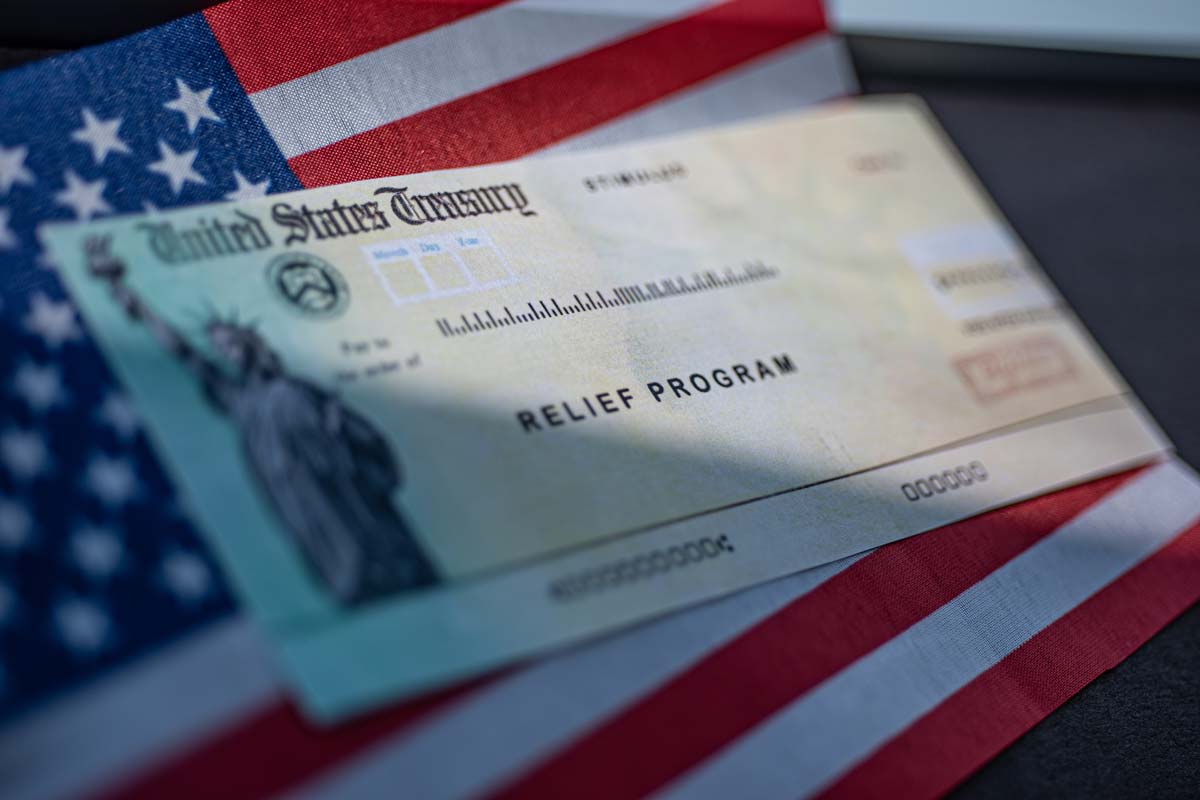On December 22, Congress passed the Consolidated Appropriations Act, 2021 (the “Act”). The Act serves as a vehicle to provide pandemic relief as well as to fund government operations through the fiscal year.
The Act is best categorized as three bills in one huge package:
- Stimulus Relief (i.e., another rebate, PPP Round 2 and unemployment insurance)
- Tax Extenders and
- Spending Appropriations
Below we have highlighted some of the key points of the Act that will impact individuals and businesses.
Advanced Rebates
In addition to the current advance refund checks sent out in the spring & summer of 2020, there is an additional credit allowed. The base amounts remain the same, $600 for individual filers, $1,200 for joint filers and an extra $600 per qualifying dependent child under 17 years old.
COMMENT: The size of these payments to taxpayers is the main reason President Trump is not signing the Act. He’s asked Congress to amend the Act to increase the checks to $2,000 per person.
The income phaseouts (begin at $150K for MFJ and $75K for single) are the same as the previously issued rebates but will be based on individuals’ 2019 tax returns.
Changes to Existing and New PPP Loans
- A second round of PPP loans for certain eligible entities. The requirements for eligibility are less than 300 employees and the business must have a 25% drop in any quarter revenues in 2020 as compared to same quarter in 2019.
- The Act clarifies that PPP loan forgiveness shall be excluded from taxable income, and that no deduction shall be denied for expenses used in PPP loan forgiveness, making PPP loan forgiveness completely nontaxable income!
- The definition of eligible “covered” expenses for PPP loan proceeds was expanded to include certain software/cloud computing services, expenditures for worker protection and facility modifications (such as PPE) to comply with COVID-19 health and safety guidelines, and expenditures to certain essential suppliers.
- The Covered Period time frame when the borrower can use the PPP funds was made more flexible, allowing the borrower to choose the end of their Covered Period, which can be any day between 8 and 24 weeks after they received their PPP loan.
- The forgiveness process for PPP loans up to $150,000 was simplified, only requiring that the borrower submit a one-page signed certification statement, to be released by the SBA by mid-January 2021.
- EIDL loan advances will no longer be deducted from PPP loan forgiveness.
COMMENT: Look for a separate Tax Update from Wegner CPAs that covers the changes to the modifications to the Paycheck Protection Program (PPP) loan program and related loan forgiveness rules.
SBA Loan Payments Covered by the SBA are Tax Exempt Income
As part of the CARES Act passed in March, certain loans under the Small Business Act (commonly referred to as SBA loans) were paid for by the Small Business Administration. These payments of principal and interest were for six months, ending in October. This loan assistance was automatic; there was no application needed for business with SBA loans covered under this program.
Without this Act provision, these payments made by the SBA would have been included in taxable income. Under the Act, the general treatment has been modified so that these payments are excluded from gross income. The language goes on to state that no deduction shall be denied by reason of this exclusion.
Finally, the Act would compel the SBA to pay an additional three months of principal and interest beginning in February 2021.
Unemployment Insurance
The bill provides an additional $300 per week for all workers receiving unemployment benefits, through March 14, 2021. This bill also extends the Pandemic Unemployment Assistance (PUA) program, with expanded coverage to the self-employed, gig workers, and others in nontraditional employment, and the Pandemic Emergency Unemployment Compensation (PEUC) program, which provides additional weeks of federally funded unemployment benefits to individuals who exhaust their regular state benefits.
Additionally, the Act increases the maximum number of weeks an individual may claim benefits through regular state unemployment plus the PEUC program, or through the PUA program, to 50 weeks. The Act also provides an extra benefit of $100 per week for certain workers who have both wage and self-employment income but whose base UI benefit calculation does not take their self-employment into account.
Changes to Payroll Credits and Tax Relief Provisions
The Act also extends the period for the employer credit for paid sick and family leave provided by the Families First Coronavirus Response Act (FFCRA). Employers may now take the credit for qualified wages paid through March 31, 2021.
The Employee Retention Credit originally provided in the CARES Act has been expanded by the Act to include the following:
- Extends the period for employers to take the Credit based on qualified wages paid through June 30, 2021.
- Beginning with first quarter 2021,
- Credit of 70% of up to $10,000 in qualified wages per quarter per employee is allowed.
- Must have had a 20% decline in revenue to qualify and allows those with PPP loans to claim the credit (retroactive to the enactment of the CARES Act).
- The retroactive credit can be reported on the 4th quarter 2020 Form 941.
The Act also extends the repayment period of the Employee Payroll Tax Deferral through December 31, 2021.
Meals Deduction
The Act allows for expensing 100% for meals & beverages at a “restaurant” for tax years 2021 and 2022. Recent law only allows a 50% deduction. We see this as a boost for the struggling restaurant industry. Note the other requirements for deductibility must be i.e., not lavish, the taxpayer is present, as is an employee or business associate, receipts/documentation, etc.
Charitable Deductions
The $300 above-the-line deduction (for standard deduction filers) is extended for 2021. For 2021, MFJ can donate up to $600. Also, the Act lifts the 60% AGI limit on donations to 100% of AGI for individuals is extended through 2021.
Flexible Spending Accounts
The $500 carryover rule (for unused reimbursement accounts at year-end) is extended through 2021. This will provide flexibility in reimbursements for those no longer participating in the plan and where the dependent aged out during the pandemic.
Tax Credit Provisions that Have Been Extended (again!):
- Several energy related provisions
- Solar energy credit
- Mortgage Insurance Premiums through 2021
- Energy Efficient Home Credit through 2021
- Nonbusiness Energy Property Credit through 2021
- New Markets Tax Credit through 2025
- Work Opportunity Credit through 2025
Other Provisions that were extended in the Act
- Empowerment Zone Tax Incentives through 2025
- Employer Credit for Paid Family and Medical Leave through 2025
- Exclusion from income of employer payment of student loans through 2025
- Transition from qualified tuition and related expenses to increased income limitation on Lifetime Learning Credit in 2021. The phaseouts for the Lifetime Learning Credit and AOTC become the same. Note: with this change, the tuition “deduction” WILL be allowed to expire in 2020.
- Medical Deduction: the AGI floor is permanently set at 7.5%
- Energy Efficient Commercial Building Deduction Section 179D is made permanent
- Exclusion from income of benefits provided to volunteer firefighters and emergency medical responders is made permanent
- Residential energy-efficient property credit, with addition of rules for inclusion of biomass fuel property expenditures through 2023
Stay tuned for more info that we will share after we get a chance to read and fully digest the 5600+ pages of the Act. Happy holidays to all and best wishes for a more prosperous 2021.
Stay tuned!
Join our email list to receive more information as it becomes available.





